RECOMMENDED VIDEOS

CSL Technologies (M) Sdn Bhd - LRC EKO-Block
CSL Technologies (M) Sdn Bhd

Earth's Energy Needs in 2Mins- Advanced Energy Solutions
Advanced Energy Saving Solutions Co., Ltd.

Euro Eco Windows
Euro Eco Windows

Shunde Corso Electronics : Energy Saving LED Lighting Products
Shunde Corso Electronics Co.,Ltd.

The Green Alternative for Pavements
Green Way Pavements
Related Stories
‘House of Trash’ proves how waste can transform into beautiful home design
Whimsical park built of recycled materials pops up in Shanghai
Elevated bamboo peace bridge for the Korean Demilitarized Zone unveiled by Shigeru Ban and Jae-Eun Choi
Colossal cardboard temple pops up in Chiang Mai in just one day
“Cannabis walls” add warmth to this eco-friendly home in Israel
16 Dec, 2017
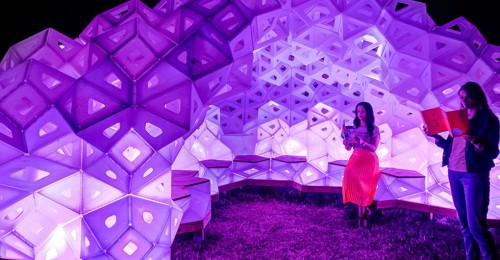
Spectacular origami pavilion made of recycled plastic pops up in Columbus, Indiana
Green Building Materials, Construction & Design | UNITED STATES | 20 Oct, 2017
Published by : Eco Media Asia
This gorgeous origami-inspired building in Columbus, Indiana is made entirely from recycled plastic – and it lights up at night with a beautiful LED display. Students at the IU School of Art, Architecture + Design in Bloomington, led by Professor Jiangmei Wu, designed the Synergia pavilion as an experiment in building complex structures inspired by biological forms, soap bubbles, and crystal patterns.
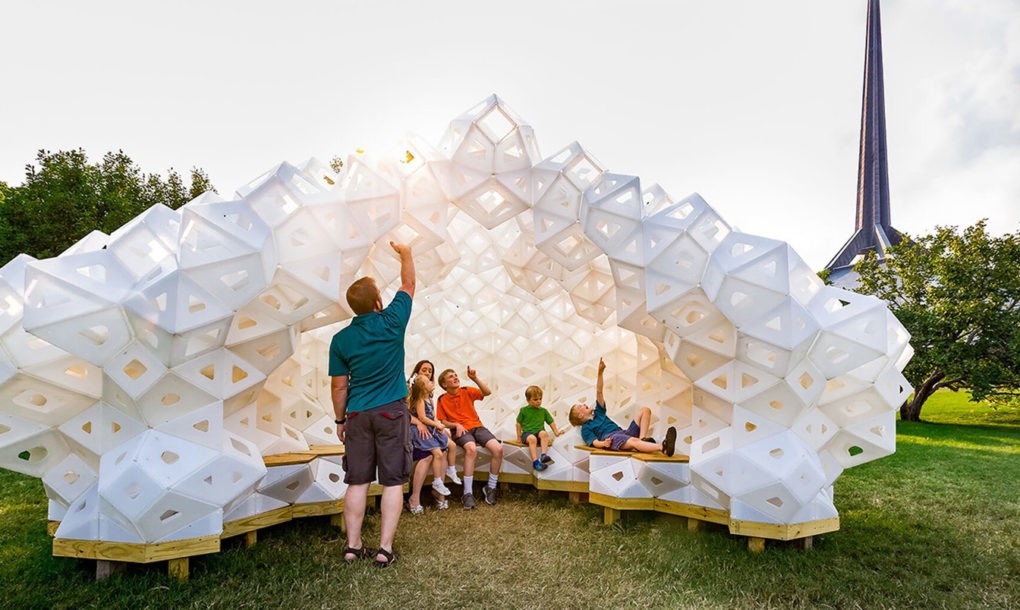
The temporary pavilion sits on the site of Eero Saarinen’s North Christian Church in Columbus, and it references the famous architect’s mid-century modernist architecture. Its design stems from a single element– a bisymmetric polyhedron tessellated into interlocking layers. Over 500 polyhedrons, measuring about two to three feet each, work together to form the elongated hexagonal shape.
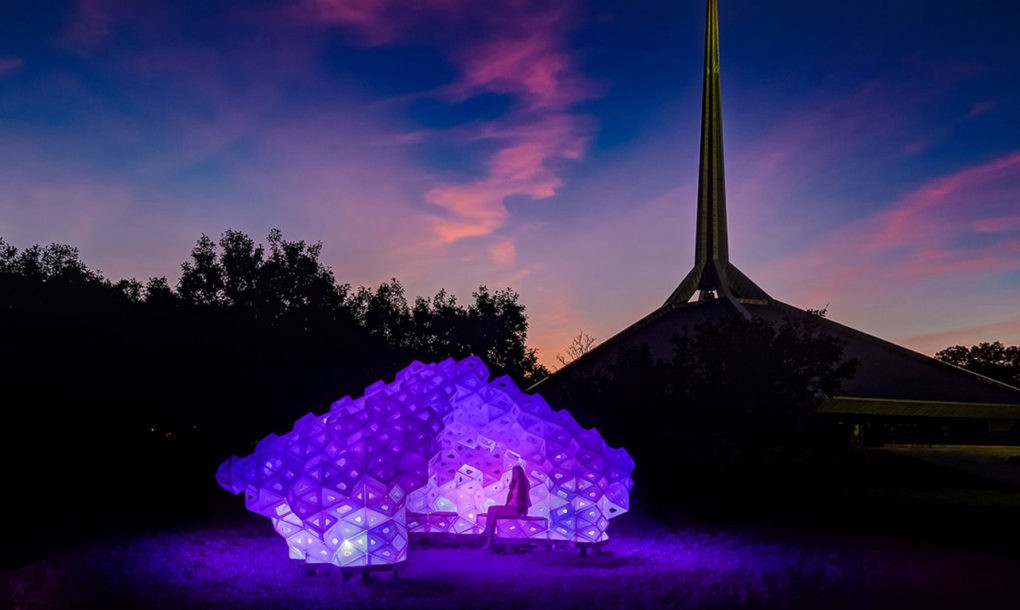
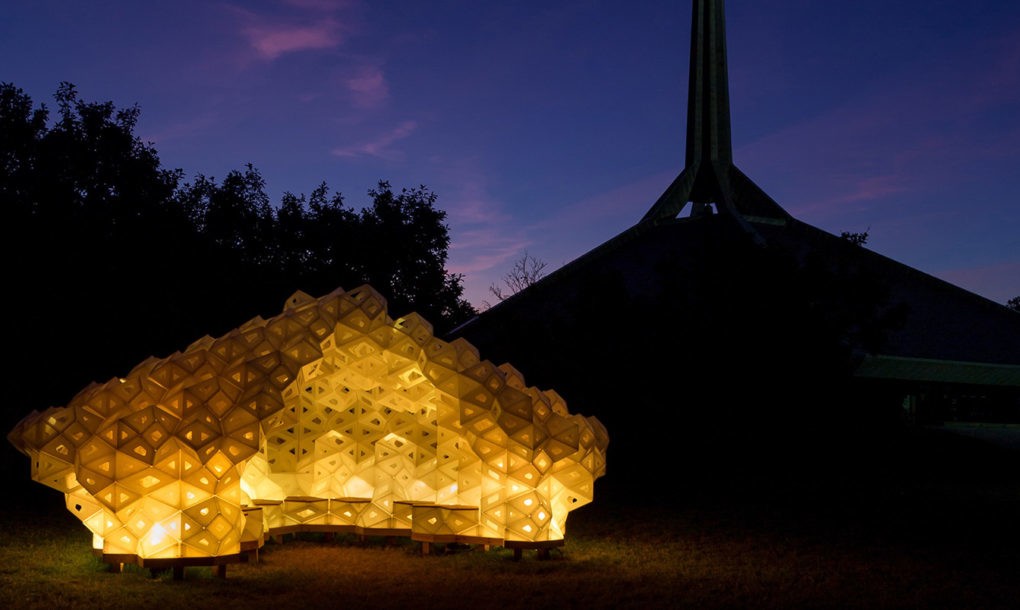
Translucent corrugated plastic sheets made from recycled plastic were laser cut at Noblitt Fabricating in Columbus Indiana and then hand folded like origami to form each of the structural units. The plastic corrugated boards are extremely lightweight and can be easily bent along the flutes.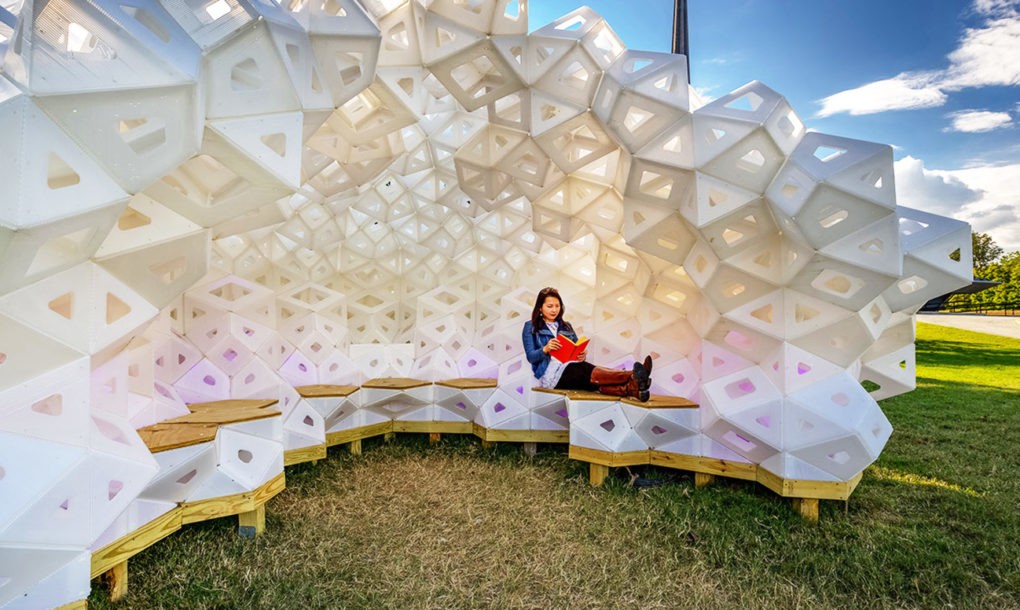
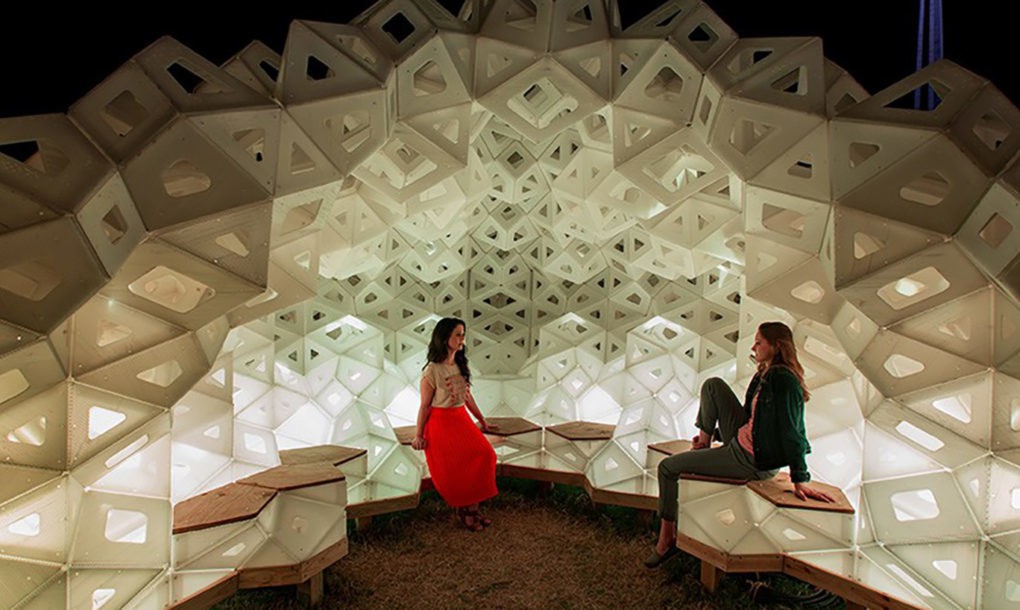
When connected together, the folded hinges produce an interlocking self-supporting lattice that is light and yet structurally efficient. This eliminates the need for additional framing and assemblage and reduces waste.
Article from inhabitat.com
by Lidija Grozdanic
